Thinking Environments with the State and Jurisdictional Humanities Councils
Preservation and education, water and recovery – for humanities councils, Earth Day in April was a reflection of environmental conversations they spark all year round. As a panelist at a Wisconsin Humanities discussion said, “What’s the best way to talk about [climate change], knowing that as a starting point this is something that should be historically, culturally, and context-dependent?”
THE WILD ALL AROUND (Humanities Magazine, NEH)
Focusing on ecological citizenship also allows us to address the significance of care, compassion, and justice toward communities that occupy little natural or ecological space. “The discipline’s recent influence from speculative fiction, sci-fi, and graphic novels by black and indigenous authors,” says Humanities Montana Executive Director Randi Lynn Tanglen, “has helped academic and public humanities scholars imagine a more sustainable relationship between humans and the environment and rethink what it means to be engaged as ecological citizens.” Read more.
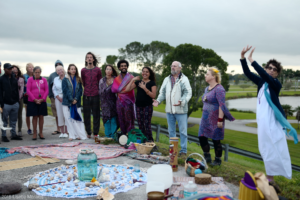 FLORIDA HUMANITIES NAVIGATES SACRED WATERS (Federation Blog)
FLORIDA HUMANITIES NAVIGATES SACRED WATERS (Federation Blog)
Growing up in southeastern Florida, Victoria Machado remembers that if the news wasn’t reporting on an alligator in someone’s pool, then it was focused on water—some kind of torrential downpour that was imminent in the afternoon or an impending hurricane on its way. Water was everywhere. But in 2007, Machado watched a severe drought rage across Florida and dry up lakes in front of her eyes—suddenly something that was everywhere was in scarce supply. Read more.
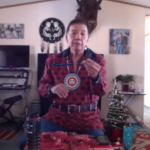 WATER STORYTELLING WITH UTAH HUMANITIES (Federation Blog)
WATER STORYTELLING WITH UTAH HUMANITIES (Federation Blog)
Ute stories about water extend from ceremonies to the waterways themselves. Cesspooch explained that waterways were not a main means of travel or existence for the Ute, and a story goes along with that. Read more.
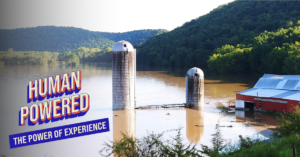 WATER FUTURES WITH WISCONSIN HUMANITIES (Federation Blog)
WATER FUTURES WITH WISCONSIN HUMANITIES (Federation Blog)
What roles do history, storytelling, public policy and civic engagement play after a flood? How do they help us understand environmental devastation that is already happening while also prepare for what’s coming? “We know that it’s not just how much rain falls and it’s not just who gets flooded, there’s really a social component to this that we’ll explore today,” said Steve Vavrus, Senior Scientist at the Nelson Institute Center for Climatic Research, University of Wisconsin-Madison (UW-Madison). “We need to consider which areas are most vulnerable.” Read more.
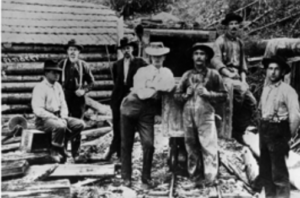 WALLACE, IDAHO: HISTORY OF A SMALL BUT MIGHTY MINING TOWN WITH IDAHO HUMANITIES (Federation Blog)
WALLACE, IDAHO: HISTORY OF A SMALL BUT MIGHTY MINING TOWN WITH IDAHO HUMANITIES (Federation Blog)
Wallace, Idaho sits on the pristine eastern edge of the Idaho panhandle in Silver Valley, the Shoshone County Coeur d’Alene Mining District. Established in 1884 with a current population of about 946, Wallace may be small, but it’s mighty—the town has held the title of the world’s largest silver producer for more than a century while facing environmental challenges from devastating fires to invasive highway construction and serious lead contamination. Read more.
ETHICS AND ECOSYSTEMS WITH DELAWARE HUMANITIES (Federation Blog)
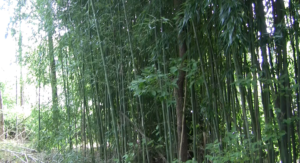 What’s the difference between an invasive and non-native species? That very beautiful Spotted Lanternfly I saw on a hike last week—is that really as big a problem as everyone says it is? On April 28, I gathered virtually with other curious listeners to watch and discuss Delaware Humanities’ Invasive Species Film, an 11-minute dive into questions like these with Natural Resources Agent Blake Moore and Environmental Humanities Program Facilitator Lisa Dill. The film followed Moore and Dill on a walk—Moore gesturing to vines, brambles, and bamboo along the trail that blanketed the landscape in a great green takeover. Read more.
What’s the difference between an invasive and non-native species? That very beautiful Spotted Lanternfly I saw on a hike last week—is that really as big a problem as everyone says it is? On April 28, I gathered virtually with other curious listeners to watch and discuss Delaware Humanities’ Invasive Species Film, an 11-minute dive into questions like these with Natural Resources Agent Blake Moore and Environmental Humanities Program Facilitator Lisa Dill. The film followed Moore and Dill on a walk—Moore gesturing to vines, brambles, and bamboo along the trail that blanketed the landscape in a great green takeover. Read more.
This post is part of “Humanities in American Life,” an initiative to increase awareness of the importance and use of the humanities in everyday American life.



